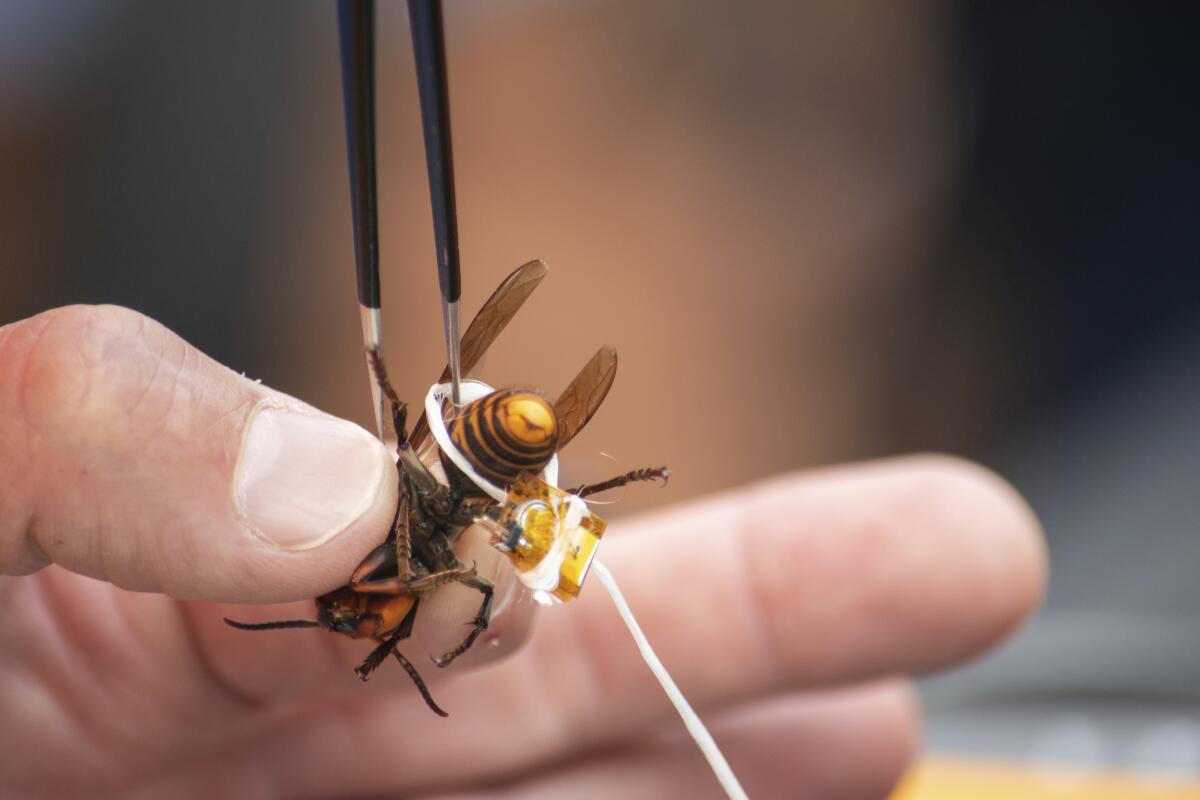Another âmurder hornetâ foils Washington stateâs effort to track it

SEATTLE â Washington state officials said Monday they were unsuccessful â again â at live-tracking a âmurder hornetâ while trying to find and destroy a nest of the giant insects.
The Washington State Department of Agriculture said an entomologist used dental floss to tie a tracking device on a female Asian giant hornet, only to lose signs of her when she went into a forest.
The hornet was captured Oct. 5 and kept alive with strawberry jam, which she seemed to enjoy, said Sven Spichiger, a department entomologist.
Scientists then tied a tracking device onto her body and released her two days later onto an apple tree. But they lost track of her after she went through some blackberry bushes, though officials believe the tracker was still attached at the time of its last signal.
âThis one was a lot feistier,â Spichiger said.
A total of 18 hornets have been found in the state since they were first seen last year near the U.S.-Canadian border, the agriculture department said.
Asian giant hornets (a.k.a. murder hornets) have been spotted only in Washington state and Canada. Traps elsewhere are killing beneficial native wasps and bees.
Officials earlier this month reported trying to glue a radio tag to another live hornet so they could follow it back to its nest, but the glue did not dry fast enough. The radio tag fell off, and the hornet ultimately could not fly.
The Asian giant hornet â the worldâs largest, at 2 inches in length â can decimate entire hives of honeybees and deliver painful stings to humans. Farmers in the northwestern U.S. depend on honeybees to pollinate many crops, including raspberries and blueberries.
Despite their homicidal nickname, the hornets kill at most a few dozen people a year in Asia, and experts say the real number is probably far lower than that. Hornets, wasps and bees typically found in the United States kill an average of 62 people a year, the Centers for Disease Control and Prevention has said.
The real threat from the hornets is their devastating attacks on honeybee hives, and the time of year when they attack those hives is nearing, Spichiger said.
He called it the âslaughter phase.â
More to Read
Sign up for Essential California
The most important California stories and recommendations in your inbox every morning.
You may occasionally receive promotional content from the Los Angeles Times.










